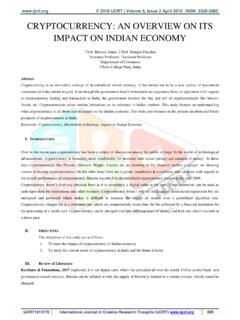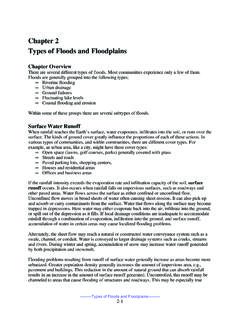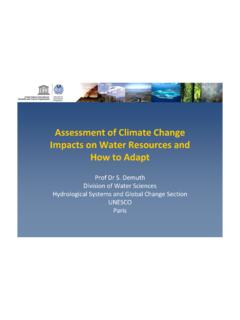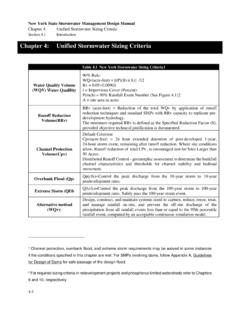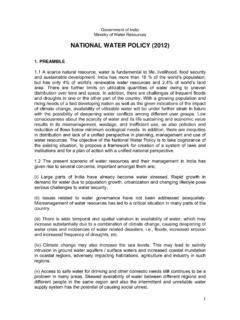Transcription of Soil Erosion: Causes, Extent and Management in India
1 2017 IJCRT | Volume 5, Issue 4 November 2017 | ISSN: 2320-2882 IJCRT1704172 International Journal of Creative Research Thoughts (IJCRT) 1321 soil erosion : Causes, Extent and Management in India Dr. Jitende r Saroha, Associate Professor, Dr. Ambedkar College, University of Delhi, Delhi, India _____ Abstract: soil is a dynamic complex of minerals and organic matter supporting plants or having capacity to support plant growth. soil formation is slow process and it is result of interaction of parent material, climate, biotic, slope and time factors.
2 soil is the most significant resource and provides base for life on earth. soil erosion , on the other hand, is a very fast process. soil erosion results into depletion and degradation of fertile productive base. soil conservation and Management is required to achieve the goal of sustainable development. The objectives of the present paper are: (i) to identify and describe the causes of soil erosion in India ; (ii) to highlight the Extent of soil erosion in India (iii) to mention the consequences of soil erosion ; and (iv) to describe the measures to tackle the problem of soil erosion in India .
3 Key Words: erosion , Ravines, Depletion, Extent , Conservation. _____ soil erosion : Definition and Causes soil erosion is a natural process associated with geomorphic processes or agents such as running water, winds, coastal waves and glaciers. Therefore it is occurring since time immemorial. But it has become a serious problem due to increased anthropogenic interferences over the period of time. soil erosion represents the process of detachment and transportation of soil particles by geomorphic agents. Detachment is the dislodging of soil particles from the soil mass and transportation is movement of detached soil particles (sediment) from their original site.
4 soil erosion in India is widespread and a serious threat to survival and well-being. It occurs in forest lands, arid and semi arid lands, agricultural lands, construction sites, roadways, disturbed lands, surface mines, glaciated and coastal areas and in areas where natural or geologic disturbances take place. In extreme case, it may lead to total loss of soil and exposure of the bed rock. Since soil formation is an extremely slow process, once removed completely, soil will take thousands or millions of years to form again and in the meantime land will be unproductive. Among two main agents of erosion namely water and winds in India about 90 per cent role is played by water.
5 In the case of erosion by water, soil particles are either detached by impacting raindrops or run-off water moving over soil surface. The high striking velocities (up to 9 m/sec) and large number of drops generate intense hydro-dynamic force to detach huge amount of soil particles. O verland flow detaches soil particles by erosive hydro-dynamic forces. The detachment by raindrops is widespread and by run-off generally confined to small definable channels. The rate of detachment varies due to variations in rainfall, run-off, soil characteristics, topography, and cover conditions.
6 Therefore, climate, hydrology, structure, topography, soil surface conditions and interactions of all these major factors together determine the rates of erosion . Water during heavy rains removes a lot of top soil . When rain drops strike the surface, sands and silts are detached from the soil body and it is called splash erosion . As rainfall continues, a large amount of water flows in the form of surface run-off which removes the top soil from a large area. This process is called sheet erosion . Due to higher velocity of the run off along areas of higher gradient and soft parent material, numerous finger-shaped grooves may develop all over the area.
7 Such grooves or channels are formed on the surface where water flows rapidly, for example the water flowing down the edges of roads and embankments. This form of erosion 2017 IJCRT | Volume 5, Issue 4 November 2017 | ISSN: 2320-2882 IJCRT1704172 International Journal of Creative Research Thoughts (IJCRT) 1322 is called rill erosion . These rills may deepen and enlarge into gullies if the erosion continues further. Extensive areas may be affected by gully formation and the whole area is turned into badlands. Gully erosion is result of lateral and vertical erosion of rills.
8 Sandy soils are more prone to formation of gullies. Ravines of Yamuna and Chambal have been formed in this manner. Rate of soil erosion by running water depends on intensity of rainfall or in coastal areas waves, velocity and volume of water, gradient, sediment load, nature of rocks and Extent of vegetative cover. The water erosion occurs through the processes of solution or corrosion, abrasion, attrition and hydrolic pressure. In the coastal areas sea waves, tidal waves and tsunamis dash along the coast and cause heavy damage to soil . This is called littoral erosion and it is most intense along the Kerala coast.
9 In the high altitude areas of the Himalayan region, glacial action causes soil erosion on a large scale. Wind erosion is active in arid and semi-arid areas which are devoid of vegetative cover. Removal of soil particles by winds is called wind erosion . The wind erosion occurs through the processes of deflation and attrition. The rate of wind erosion is a function of wind velocity, dryness of soil , Extent of vegetative cover and the particles size of surface soil . Higher the wind velocity, higher will be the rate of removal of soil . Dry soils and soils having no plant cover are also more prone to soil erosion .
10 Also the finer textured soils are more prone to erosion than coarser materials. soil erosion by wind erosion is common in Rajasthan and the adjoining areas of Haryana, Punjab and Gujarat. In addition to action of water, winds and glaciers, human and animal interferences also lead to soil erosion in a variety of ways. Deforestation, overgrazing and faulty methods of agriculture contribute significantly to soil erosion . Trees and plants protect soil from erosion by binding the structure directly and by constantly adding moisture to it. Vegetation and litter from trees also acts as a cushion against splash erosion during rains.




